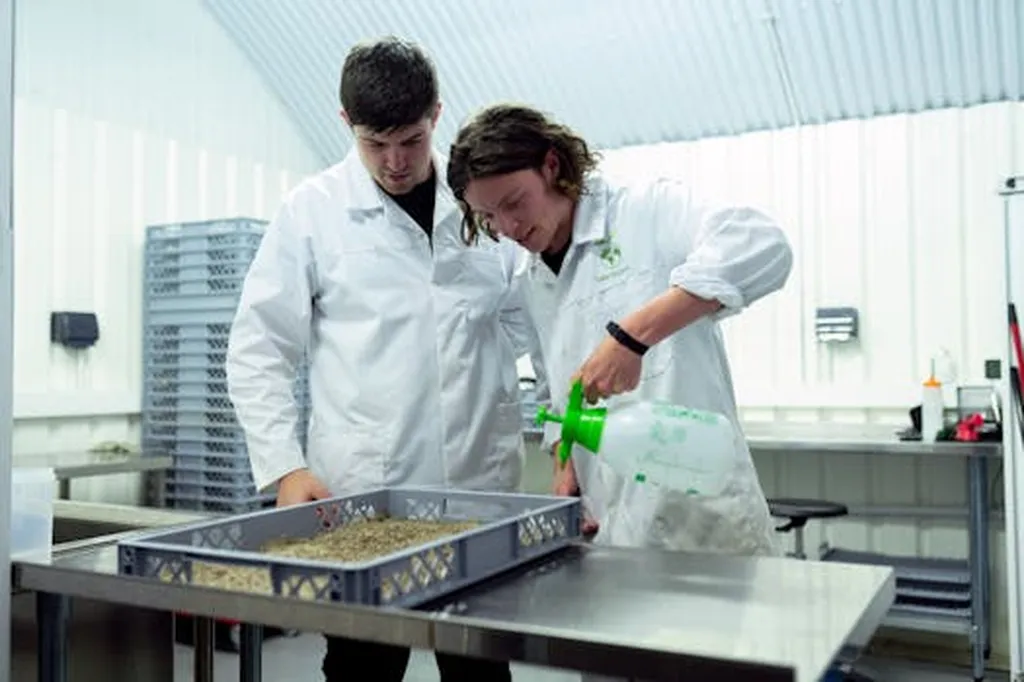In the world of plant science, a new study has shed light on the intricate world of sterol biosynthesis, offering potential pathways to enhance crop resilience and metabolic engineering. Published in *Frontiers in Plant Science*, the research led by Sylvia E. Brown from the College of Agronomy and Biotechnology at Yunnan Agricultural University, focuses on sterol C-22 desaturases (C22SDs) and C-24 methyltransferases (C24SMTs) in Asparagus officinalis and Asparagus taliensis. These enzymes play a crucial role in sterol side-chain remodeling, which is essential for membrane stability, hormone biosynthesis, and defense metabolite production.
Steroids are vital components of plant membranes and serve as precursors for brassinosteroids (BRs) and steroidal saponins (SSs), which regulate growth, development, and stress adaptation. However, the molecular roles of these sterol-modifying enzymes in Asparagus have remained poorly understood—until now.
The study employed a comprehensive functional genomics approach, integrating genome-wide identification, phylogenetic reconstruction, gene structure, conserved motif, and cis-element analyses. Transcriptomics-based expression profiling revealed tissue-specific expression patterns, suggesting functional divergence among gene family members. Structural modeling and molecular docking further highlighted the conservation of catalytic residues and predicted substrate interactions.
One of the most significant aspects of this research is the functional validation performed in Neurospora crassa, a model organism for studying sterol biosynthesis. By disrupting erg5, erg6, or both genes in N. crassa, the researchers observed impaired ergosterol biosynthesis, growth, and membrane fluidity. Complementation with selected Asparagus genes restored these traits, indicating the catalytic competence of these enzymes in the eukaryotic sterol pathway.
“This study not only catalogs the C22SD and C24SMT families but also demonstrates their potential roles in membrane stability, hormone biosynthesis, and defense metabolite production,” said lead author Sylvia E. Brown. “These findings highlight sterol remodeling as a potential target for developing stress-resilient crops.”
The implications for the agriculture sector are profound. Understanding and manipulating sterol biosynthesis could lead to the development of crops that are more resilient to environmental stresses, such as drought, salinity, and temperature fluctuations. This could have a significant impact on global food security, particularly in regions where crops are frequently exposed to adverse conditions.
Moreover, the study provides a framework for future research into the in-planta roles of these enzymes. As Brown noted, “While we have demonstrated the catalytic competence of these enzymes in a model organism, further studies are needed to establish their precise roles in Asparagus and other crops.”
The research also opens up new avenues for metabolic engineering, where sterol biosynthesis pathways could be optimized to enhance crop yield and quality. This could be particularly beneficial for the production of high-value crops, such as Asparagus, which are known for their nutritional and medicinal properties.
In conclusion, this study represents a significant step forward in our understanding of sterol biosynthesis and its potential applications in agriculture. By characterizing sterol side-chain remodeling enzymes, the researchers have laid the groundwork for developing stress-resilient crops and advancing metabolic engineering. As the global population continues to grow, the need for innovative solutions to enhance crop resilience and productivity has never been greater. This research offers a promising pathway to meet these challenges and secure a more sustainable future for agriculture.

